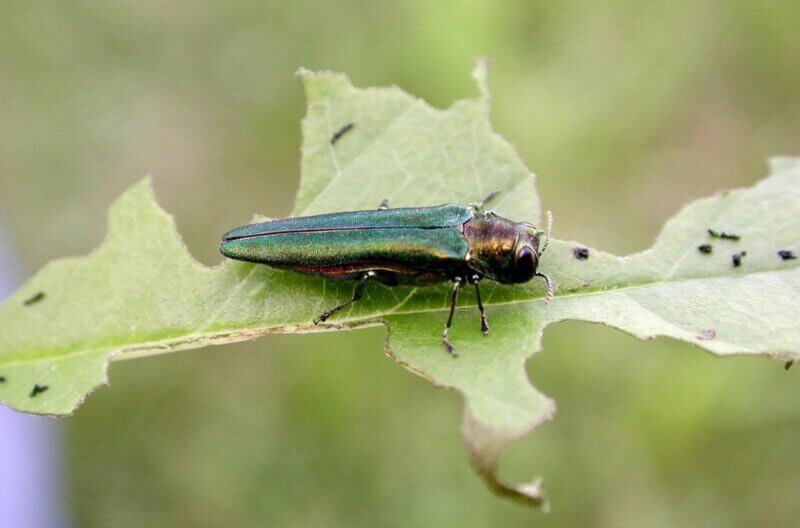May 19-26 designated Emerald Ash Borer Awareness Week
The emerald ash borer is no stranger to Vermont, having first been reported in 2018 in northern Orange County. Since then, it has been confirmed in every county in the state except Essex County.
This invasive wood-boring insect attacks all species of native ash trees within the Fraxinus genus. It is predicted to kill almost 99 percent of Vermont’s ash trees if they are left untreated.
To draw attention to this pest and the environmental and economic damage it can cause, the week of May 19-26 has been designated as National Emerald Ash Borer Awareness Week. For its part, the Vermont Urban and Community Forestry program is helping to increase public awareness by providing resources and encouraging Vermonters to get involved by scouting for the pest, organizing a neighborhood ash tree-tagging event or spreading awareness on social media.

Adult emerald ash borers, which emerge in late May or early June, are 1/4- to 1/2-inch long and dark green and metallic in color.
An online Emerald Ash Borer Awareness Week toolkit is available at go.uvm.edu/eab-toolkit. It contains posters, videos, sample social media posts and other tools; resources for educators; information on ash tree identification and guidelines for hosting a neighborhood ash tree walk or tree-tagging event.
In addition, Vermont Urban and Community Forestry is asking outdoor recreationists, landowners and other community members to be on the lookout for signs of this pest. Adults, which emerge in late May or early June, are 1/4- to 1/2-inches long and dark green and metallic in color. Affected trees will show signs of thinning canopy, epicormic sprouting, woodpecker flecking and s-shaped tunnels behind the outer bark.
Sightings of the pest and any trees suspected of being infested with emerald ash borer can be documented with photos and reported via the “Report It!” button on the Vermont Invasives website at vtinvasives.org.
This website also has a number of resources, including videos and maps showing infested areas, to help homeowners, municipalities and forest landowners and managers identify, understand and control the spread of emerald ash borer. Municipalities can access templates to write ash management plans, tools to calculate the costs of different management scenarios, case studies from other municipalities and sample documents, such as letters to residents and contracts with tree removal companies.
While towns may choose to treat some public ash trees with pesticides, this option can be costly and must be done before the beetle is well established in the tree. Damage from emerald ash borer is not always apparent as once an adult starts laying eggs in an ash tree, it can take from three to five years for enough larvae to build up under the bark for the tree to show any symptoms.
It may take up to a decade from when emerald ash borer first arrives in an area before ash trees begin dying off on a large scale. Ash trees that are not treated or removed will die, potentially creating a hazard along roads and other public areas. Having a management plan in place will help municipalities better prepare and manage the impacts of emerald ash borer and the loss of ash trees in their communities.
Vermonters can do their part to slow the spread of emerald ash borer by following the “buy it where you burn it” rule. This means not transporting firewood long distances. Instead, use only certified, treated firewood or buy or gather firewood close to where it will be burned. All Vermont state campgrounds and many privately owned campgrounds have local firewood available for purchase on-site and can recommend additional places to buy wood locally.

